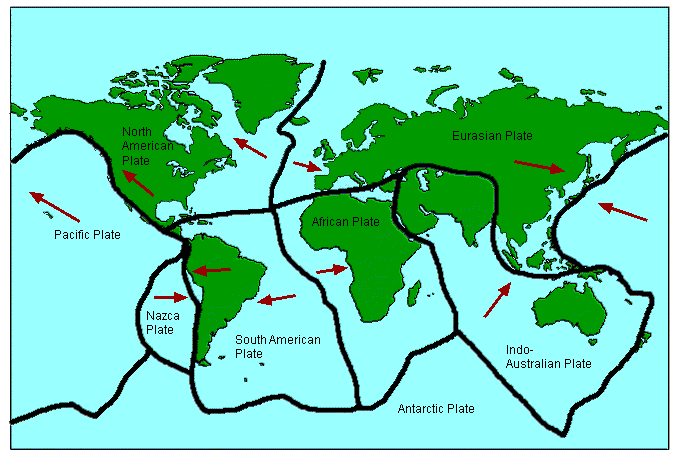 鲜花( 87)  鸡蛋( 1)
|
 : w) W0 ~4 J3 e1 U7 ~ : w) W0 ~4 J3 e1 U7 ~
; t) r$ H, b" @; _+ b9 m; K, [The rules of Plate Tectonics ; [& ~! f" B! ]5 K6 O/ V, Z
7 {+ e! \8 S. R% w0 S4 {
1. Continental crust is less dense, or lighter, than Oceanic crust so it doesn't sink. It is never destroyed and is permanent.
% W& q I0 o* t
4 R n5 a* r* V, U8 J2. Oceanic crust is heavier so it can sink below Continental crust. It is constantly being formed and destroyed at ocean ridges and trenches. & e' H& E @# H* v2 W6 X& n8 h( y
2 a8 S6 j/ Z8 }. S* Z# ~3. Continental crust can carry on beyond the edges of the land and finally end far below the sea. This explains why the edges of all the continents don't have deep trenches right up against their coastlines.
3 K& u, n# f* }# A% b- o0 B* s1 J, z4 H) y7 U0 C
4. Plates can never overlap. This means that they must either collide and both be pushed up to form mountains, or one of the plates must be pushed down into the mantle and be destroyed. ! u4 w' @6 n) f. l& A' L! t
6 p h% s5 k |$ d5. There can never be gaps between plates, so if two plates move apart, as in the middle of the Atlantic, new rock will be formed to fill the space.
9 I& C9 ]+ f3 W, J
. r# H) Q; n2 y6 v6 x; @6. We know the Earth isn't getting bigger or smaller, so the amount of new crust being formed must be the same as the amount being destroyed.
# W: J+ Z+ U1 o% J; D! B: Q5 m; J8 O5 W/ F: m
7. Plate movement is very slow. This is partly why Wegener's original ideas were ignored. Nobody could 'see' the continents moving. When the plates make a sudden movement we call it an Earthquake, and it's the only time we are directly aware of the plates moving. |
|
